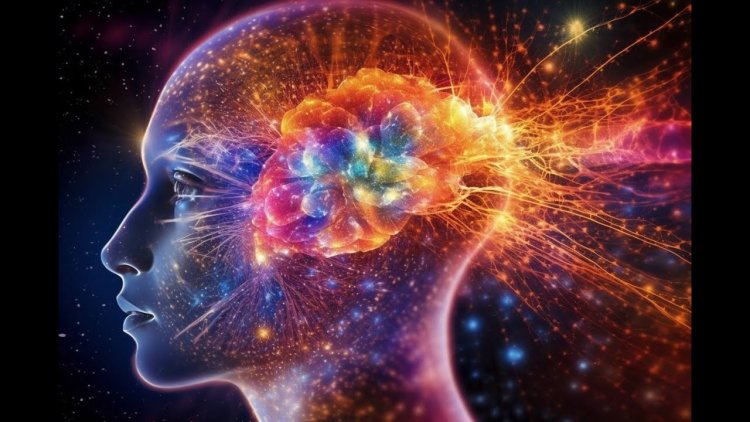Study gives more insight into conscious experience that resides in brain

California, US: One unusual problem that more than a quarter of stroke sufferers have is the loss of conscious awareness for half of what their eyes see.
For instance, if a stroke affects the right half of the brain, the affected individual may only be able to consume what is on the right side of the plate because they are blind to what is on the left. The person may only see the right side of a picture and fail to notice the person on the left.
However, these stroke victims are surprisingly capable of feeling strongly about the complete image or setting. These folks appear to be absorbing everything, but their conscious awareness only covers a portion of the environment.
This perplexing condition, known as unilateral neglect, brings to light a perennial issue in brain research: What distinguishes perception from awareness or consciousness of perception? While scrolling through your Instagram feed, you may have passed a shoe store without realising it, but you still started looking for shoe bargains online. Things that you don't consciously take note of are recorded by your brain.
Neuroscientists from the Hebrew University of Jerusalem and the University of California, Berkeley, now report that they may have found the region of the brain where these sustained visual images are retained during the few seconds we perceive them. They published their findings this month in the journal Cell Reports.
"Consciousness, and in particular, visual experience, is the most fundamental thing that everyone feels from the moment they open their eyes when they wake up in the morning to the moment they go to sleep," said Hebrew University graduate student Gal Vishne, lead author of the paper. "Our study is about your everyday experience."
While the findings do not yet explain how we can be unaware of what we perceive, studies like these could have practical applications in the future, perhaps allowing doctors to tell from a coma patient's brain activity whether the person is still aware of the outside world and potentially able to improve. Understanding consciousness may also help doctors develop treatments for disorders of consciousness.
"The inspiration for my whole scientific career comes from patients with stroke who suffer from unilateral neglect, where they just ignore half of the world," said senior author Leon Deouell, a Hebrew University professor of psychology and member of the Edmond and Lily Safra Center for brain research. "That actually triggered my whole interest in the question of conscious awareness. How is it that you can have the information, but still not acknowledge it as something that you're subjectively experiencing, not act upon it, not move your eyes to it, not grab it? What is required for something not only to be sensed by the brain, but for you to have a subjective experience? Understanding that would eventually help us understand what is missing in the cognitive system and in the brains of patients who have this kind of a syndrome."
"We are adding a piece to the puzzle of consciousness — how things remain in your mind's eye for you to act on," added Robert Knight, also a senior author and a UC Berkeley professor of psychology and member of the Helen Wills Neuroscience Institute.
Deouell noted that for some six decades, electrical studies of the human brain have almost solely concentrated on the initial surge of activity after something is perceived. But this spike dies out after about 300 or 400 milliseconds, while we often look at and are consciously aware of things for seconds or longer.
"That leaves a whole lot of time which is not explained in neural terms," he said.
In search of longer-lasting activity, the neuroscientists obtained consent to run tests on 10 people whose skulls were being opened so that electrodes could be placed on the brain surface to track neural activity associated with epileptic seizures. The researchers recorded brain activity from the electrodes as they showed different images to the patients on a computer screen for different lengths of time, up to 1.5 seconds. The patients were asked to press a button when they saw an occasional item of clothing to ensure that they truly were paying attention.
Most methods used to record neural activity in humans, such as functional MRI (fMRI) or electroencephalography (EEG), only allow researchers to make detailed inferences about where brain activity is happening or when, but not both. By employing electrodes implanted inside the skull, the Hebrew University/UC Berkeley researchers were able to bridge this gap.
After analyzing the data using machine learning, the team found that, contrary to earlier studies that saw only a brief burst of activity in the brain when something new was perceived, the visual areas of the brain actually retained information about the percept at a low level of activity for much longer. The sustained pattern of neural activity was similar to the pattern of the initial activity and changed when a person viewed a different image.
"This stable representation suggests a neural basis for stable perception over time, despite the changing level of activity," Deouell said.
Unlike some earlier studies, they found that the prefrontal and parietal cortexes in the front of the brain become active only when something new is perceived, with information disappearing entirely within half a second (500 milliseconds), even for a much longer stimulus.
The occipitotemporal area of the visual cortex in the back of the brain also becomes very active briefly — for about 300 milliseconds — and then drops to a sustained but low level, about 10% to 20% of the initial spike. But the pattern of activity does not go away; it actually lasts unaltered about as long as a person views an image.
"The frontal cortex is involved in the detection of something new," Deouell explained. "But you also see an ongoing representation in the higher-level sensory regions."
The sequence of events in the brain could be interpreted in various ways. Knight and Vishne lean toward the idea that conscious awareness comes when the prefrontal cortex accesses the sustained activity in the visual cortex. Deouell suspects that consciousness arises from connections among many areas of the brain, the prefrontal cortex being just one of them.
The team's findings have been confirmed by a group that calls itself the Cogitate Consortium. Though the consortium's results are still awaiting peer review, they were described in a June event in New York City that was billed as a face-off between two "leading" theories of consciousness.
Both the Cell Reports results and the unpublished results could fit either theory of consciousness. "That adversarial collaboration involves two theories out of something like 22 current theories of consciousness," Deouell cautioned. "Many theories usually means that we don't understand."
Nevertheless, the two studies and other ongoing studies that are part of the adversarial collaboration initiated by the Templeton Foundation could lead to a true, testable theory of consciousness.
"Regarding the predictions of the two theories which we were able to test, both are correct. But looking at the broader picture, none of the theories in their current form work, even though we find each to have some grain of truth, at the moment," Vishne said. "With so much still unknown about the neural basis of consciousness, we believe that more data should be collected before a new phoenix can rise out of the ashes of the previous theories. "















































